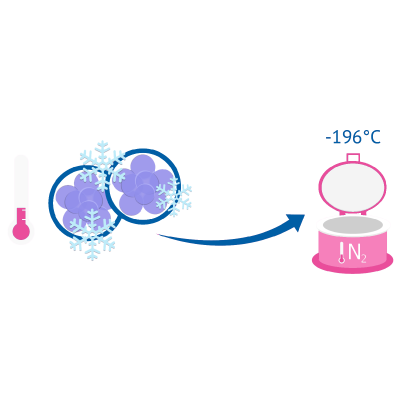Vitrification, a cutting-edge technique in assisted reproductive technology (ART), has revolutionized the preservation of biological materials, particularly in the realm of fertility treatments. This advanced cryopreservation method involves the rapid cooling of cells or embryos to ultra-low temperatures, essentially transforming them into a glass-like, ice-free state. Unlike traditional slow freezing methods, vitrification minimizes the formation of ice crystals, reducing the risk of cellular damage during the freezing and thawing processes. Initially developed for oocyte (egg) cryopreservation, vitrification has extended its application to embryos, sperm, and even ovarian tissue. Its significance lies in its ability to maintain the viability of reproductive cells and embryos, offering individuals and couples greater flexibility in family planning, fertility preservation, and the optimization of success rates in various assisted reproductive procedures. As a pivotal advancement in the field, vitrification plays a pivotal role in expanding possibilities for individuals seeking to navigate the challenges of fertility preservation and treatment.
Vitrification, a state-of-the-art cryopreservation technique, involves a meticulously controlled process to preserve biological materials with minimal cellular damage. The procedure typically includes the following key steps:
Vitrification has become a cornerstone in fertility preservation and assisted reproductive technologies, providing a highly effective method for storing reproductive cells and embryos with minimal damage, thereby optimizing the chances of successful implantation and pregnancy during subsequent fertility treatments.

In conclusion, vitrification stands as a transformative cornerstone in the landscape of fertility preservation and assisted reproductive technologies. Its rapid cooling approach, minimizing ice crystal formation and preserving the structural integrity of reproductive cells and embryos, has elevated success rates in fertility treatments. With benefits ranging from enhanced viability and survival rates to increased flexibility in family planning, vitrification has become a game-changer. The streamlined laboratory protocols, versatility across various reproductive cells, and reduced risk of cryoprotectant toxicity further underscore its significance. As a beacon of hope for individuals navigating fertility challenges, vitrification not only preserves the potential for biological parenthood but also empowers those undergoing medical treatments with the possibility of a future family. Its impact resonates not just in laboratories but in the hearts of individuals and couples, offering a pathway to realizing the dream of building a family despite the constraints of time and circumstances.
